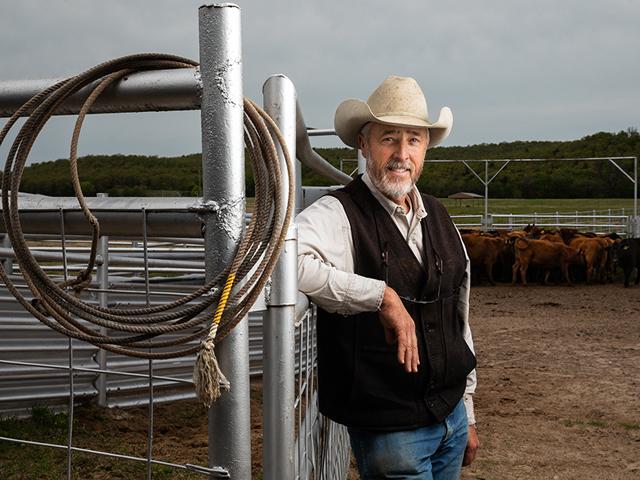Regenerative Ranching
Four Thoughts on Drought From a Fifth-Generation Rancher
Drought can be one of the most difficult challenges for a rancher to work through, but it's not necessarily impossible. Lifelong cattleman Yates Adcock recently shared his tips for getting through drought in a report from the Noble Research Institute. He said that his mindset about drought began to shift in 2008, as he moved toward a system of regenerative ranching.
Adcock oversees two operations across Hughes, Pittsburg and McIntosh counties of Oklahoma. He said there are four things he'd like to share with other ranchers going through drought.
-- ONE. Not all droughts are created equal, said Adcock. "You have to think about this drought and the season you're standing in," he explained.
P[L1] D[0x0] M[300x250] OOP[F] ADUNIT[] T[]
-- TWO. All cows aren't created equal either. Adcock holds a bachelor's degree in animal production from Oklahoma State University and a master's degree in business from Oklahoma City University. He said he's found it's vital to match cows to the environment they ranch in. It's also important to already have a plan in place for how to reduce the herd if it comes to that.
"When you're coming into a drought -- or even if you're already in one -- your resources are extremely marginal, and it's a good time to put some trigger points in place," Adcock says. "Plan ahead to decide how and when you're going to cull some cows. Maybe you start preg-checking earlier. Do what you need to do to make sure the cows left on the place are going to work for you even when times are hard."
-- THREE. Adjust to make regenerative grazing practices work, said Adcock. He noted it can take a good bit of trial and error to find out which practices fit which operations best.
"Find out what your skillset is and what you're comfortable with. And then try that on some acreage and monitor the changes. Be willing to make adjustments along the way because there's always a way to do things better," he said.
In Adcock's case, a labor shortage last fall meant he didn't plant as many acres of cover crops as usual. Cattle grazed their stockpile instead -- which fed them and helped scatter ryegrass seed. Given the lack of moisture, he said he's glad he didn't push to plant the 1,000 acres of cool-season forage he normally does -- because looking back there wasn't enough moisture ultimately to justify the expense.
-- FOUR. Regenerative ranching pays off in a drought, but it also pays off when things are good. Adcock said adopting regenerative practices has taken his fertilizer budget to nearly nothing, the same on brush control. But the benefits aren't just monetary, he added.
"I've always thought there's just a big responsibility to be a good steward of whatever God has entrusted under your care," he said. "It's humbling the footprint that we leave. You may think you're leaving a good footprint for the next generation, and you may find out that it was a damaging footprint. I think you just really have to leave no rock unturned and keep on improving the land."
For more information on regenerative practices for ranchers, go to: www.noble.org.
(c) Copyright 2022 DTN, LLC. All rights reserved.





